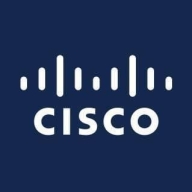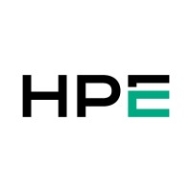

HPE Synergy and Cisco UCS E-Series Servers compete in the composable infrastructure market. HPE Synergy holds an edge with its advanced composability and central management capabilities, while Cisco UCS stands out for integration and network provisioning.
Features: HPE Synergy provides a highly composable infrastructure, allowing dynamic allocation of resources such as RAM and CPU to meet various workloads. The central management through HPE OneView facilitates easy hardware deployment and adjustments. Cisco UCS E-Series Servers boast stability and strong integration within Cisco’s networking portfolio, offering easy hardware maintenance and reliable performance.
Room for Improvement: HPE Synergy users request better storage connectivity and smoother integration with external systems. Compatibility across diverse hardware vendors is also suggested for expansion. Cisco UCS E-Series Servers face feedback regarding high pricing and limited scalability, with users seeking better integration in mixed vendor environments.
Ease of Deployment and Customer Service: HPE Synergy provides comprehensive support, though some users report inconsistencies in initial technical assistance. Cisco UCS E-Series Servers emphasize straightforward deployment and customer service, meeting customer expectations with standardized processes. Both solutions benefit from robust service networks.
Pricing and ROI: HPE Synergy is perceived as a premium solution, backed by its advanced capabilities, offering significant operational savings and ROI through technology integration. Cisco UCS E-Series Servers are cost-effective with lower capital expenses. Despite higher initial costs, they deliver consistent performance and manageable total cost of ownership.
| Product | Market Share (%) |
|---|---|
| HPE Synergy | 18.8% |
| Cisco UCS E-Series Servers | 3.0% |
| Other | 78.2% |


| Company Size | Count |
|---|---|
| Small Business | 2 |
| Midsize Enterprise | 5 |
| Company Size | Count |
|---|---|
| Small Business | 30 |
| Midsize Enterprise | 15 |
| Large Enterprise | 56 |
Cisco UCS E-Series Servers are next-generation, power-optimized, x86, Intel Xeon 64-bit blade servers designed to be deployed in Cisco Integrated Services Routers Generation 2 (ISR G2) and the Cisco 4451-X ISR. These price-to-performance-optimized single-socket blade servers balance simplicity, performance, reliability, and power efficiency. They are well suited for applications and infrastructure services typically deployed in small offices and branch offices.
HPE Synergy, the first platform built from the ground up for Composable Infrastructure, offers an experience that empowers IT to create and deliver new value instantly and continuously. It is a single infrastructure that reduces operational complexity for traditional workloads and increases operational velocity for the new breed of applications and services. Through a single interface, HPE Synergy composes physical and virtual compute, storage, and fabric pools into any configuration for any application. As an extensible platform, it easily enables a broad range of applications and operational models such as virtualization, hybrid cloud, and DevOps. With HPE Synergy, IT can become not just the internal service provider but the business partner to rapidly launch new applications that become the business.
We monitor all Blade Servers reviews to prevent fraudulent reviews and keep review quality high. We do not post reviews by company employees or direct competitors. We validate each review for authenticity via cross-reference with LinkedIn, and personal follow-up with the reviewer when necessary.